Linda Rodriguez's Blog, page 8
November 24, 2015
WHAT RIVER SAYS: A Poem for Native American Heritage Month
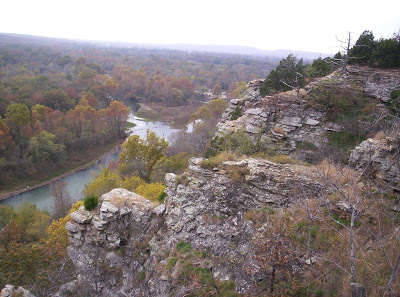
This poem is from a suite of poems I've written called "First Cousins Speak."
WHAT RIVER SAYS
The Cherokee call me Long Man, yun wi gun hi ta, because my body stretches and unravels with my head in the mountains and my feet resting in the ocean. I constantly speak words of wisdom to those who can understand me— fewer every day. It takes a quality of attention fit for magicians or poets. I have much to tell those who expend the time and energy to listen. I have seen so many things. I know the history of rain intimately, leaning on the world to feel it on my skin and take it inside me to swell my body. Maybe, they should have called me Long Woman.
I remember when the mountains were home only to gods. I knew your ancestors, now tangled in the ground. I swallowed my share and more. I have seen innumerable generations driving toward their deaths. I am acquainted with the bones of earth, ancient as the word of God and stronger by far. Men have tried forever to change me and chain me, but I still wander where I will when I grow tired of being tame. I remain the promise of tomorrow, the hope of new growth that haunts the night with hypnotic murmurs and softens the edge between act and dream.
When all hope has fled, come to me.
(Published in TRIVIA: Voices of Feminism)
Published on November 24, 2015 18:23
November 13, 2015
Learning Cherokee--A Poem for Native American Heritage Month

LEARNING CHEROKEE
O si yo. Hello. To hi tsu. How are you? Di gwo ye ni u si wha. My hands are empty. Ga do u s di hi a What is this? Gi ga ge i. Red. U ne ga. White. A ma. Water. Wa do Thank you. Yo ne ga. White man. Nu la. Hurry. Ani yv wi a. The People. Ga tli da. Arrow. Ga yo tli ga do hi. Just a little land. A ge hya. Woman. A ni s ga ya. Men. A sa no. Dress. Qua na hl gv ni. Peach trees. Ga yo tli ga do hi. Just a little land. Dlo ge si. Field. Yv gi. Nail. Ga yo tli gado hi. Just a little land. Tsa dag’ sta sde sdi! Be careful! A de la. Money. Tla hv. Absolutely not. Ni gad a ga do a! All your land! Gi ga. Blood. E hi sti yu. Pain.
Published on November 13, 2015 08:15
November 9, 2015
Meeting Hecate--Another poem for Native American Heritage Month
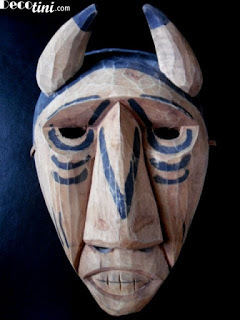
This poem is based on a traditional Cherokee teaching story my grandmother used to tell me when I was small.
MEETING HECATE
How I fear the witch in me, the one in touch with power, the one who knows without knowing how, the secret priestess, spirit-bearer, the ugly side of woman, the crone— and I remember the Cherokee legend of Stoneskin, superhuman cannibal, devouring whole villages, how the People set up a fortress of women menstruating, how the sight of each weakened Stoneskin until he died and, dying, told them all the secrets, ways of power, conjure spells, ways to do things.
The Cherokee live off the wisdom of a dying monster and the power of bleeding women, and they remember this. There is a witch somewhere in every woman.
Published in Heart’s Migration (Tia Chucha Press, 2009)
Published on November 09, 2015 09:52
November 3, 2015
Indian Removal Cartography: A Poem for Native American Heritage Month

I fought through the War Between the States and have seen many men shot, but the Cherokee Removal was the cruelest work I ever knew.
— Georgia soldier who participated in the removal
INDIAN REMOVAL CARTOGRAPHY
It’s an old map, looks hand-drawn. Starting in Georgia, North Carolina, Tennessee, Alabama, a broad swath of territory belonging to the Cherokee, yet shrunken so from where the first Europeans found them, that kidney-shaped province splayed across the states contracts down to these thin lines marking the paths they were forced to travel.
This old-looking map has been modified for the modern scholar with gray-banded place names highlighted. When you hover a computer mouse over one of these shaded names, pertinent facts appear. From New Echota, capital of the Cherokee Nation in 1838, now a state park, to Fort Butler, one of five North Carolina stockades where Cherokee were held under foul conditions, to Fort Payne, yet another removal fort and internment camp in Alabama, to Ross’s Landing where more than 2,000 were held prisoner and departed in three large groups to travel to Indian Territory by water. The Unicoi Turnpike, an ancient war and trading path, took other groups onto the Trail of Tears, is now designated a Millennium Trail. Charleston, Tennessee, where 13,000 were held for months, waiting to begin their unwilling trek across five states in winter. Hopkinsville, Kentucky, Chief Whitepath died and was buried here, remarkable for being one of the few whose graves are known. Hover long enough over Hopkinsville and the screen will tell you “Most of the thousands of Cherokees who died on the Trail lie in unmarked graves.”
(Published in The Whirlybird Anthology, 2013)
Published on November 03, 2015 14:06
October 15, 2015
Whitewashing History
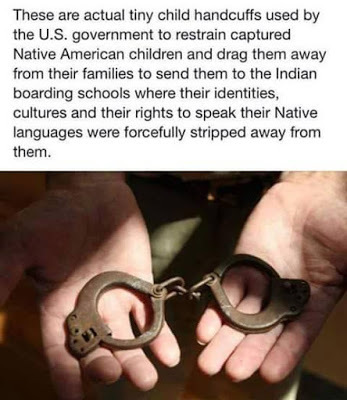
In the past month, a troubling situation has played out in the national news. http://indiancountrytodaymedianetwork.com/2015/09/06/history-professor-denies-native-genocide-native-student-disagrees-gets-expelled-course
https://www.insidehighered.com/news/2015/09/15/sacramento-state-student-says-she-was-kicked-out-class-arguing-native-americans-were
http://www.sacbee.com/news/local/education/article35151201.html
In a history class on the California State University at Sacramento campus, Chiitaanibah Johnson, a Native undergraduate (Maidu and Diné) , challenged her adjunct professor, Maury Wiseman, when he said: “I don’t like to use the term ‘genocide’ because ‘genocide’ is something that is done on purpose, but needless to say European diseases primarily, European diseases primarily [sic], will wipe out Native American populations in the two continents and hence one of the reasons why later in history many Europeans will imagine that these continents were empty.” [This quote is one Wiseman gave to the media, claiming it came from an audiotape of his class.]
Johnson researched the subject for two days and returned to class to present evidence that what Wiseman had said was not accurate. Wiseman grew angry, accused her of high-jacking his class and of trying to make him look racist and bigoted, told her she was “dis-enrolled” from the class and not to return, and dismissed the class midway through. Johnson filed a complaint with the university administration, and the story hit national media.
After a month-long investigation, President Robert Nelsen found no fault on either side and closed the case, encouraging the campus community to continue discussion about the issues involved. The university will also offer a new genocide studies minor (to be located in the Ethnic Studies Department rather than the History Department) and offer cultural sensitivity and classroom management training in faculty orientations. https://www.insidehighered.com/news/2015/10/09/sacramento-state-ends-investigation-disagreement-over-what-professor-said-about
This idea that there was no Native genocide because disease alone killed all the Indigenous peoples on the continent, leaving it conveniently vacant for Europeans is a race-based “intuitive” theory from the 1970s that has been refuted since the end of the 20th century by scholars actually working with primary documents and other evidence. The “virgin soil thesis,” based on the belief that Natives’ lack of immunities and their inept healers were responsible for their downfall, was propounded by Alfred Crosby in 1976. This theory was quite popular for a time early in the last half of the 20th century because it placed all the responsibility for the massive death counts among Indigenous peoples after European arrival on the Indigenous people themselves because they were genetically weak, lacking in acquired immunity, and lacking in competent medical care, rather than on the violence waged against them by Europeans from the very beginning of contact and continuing into the early 20th century.
As David S. Jones points out in “Virgin Soils Revisited” in The William and Mary Quarterly (October 2003), “Perhaps the idea that Indian depopulation can be explained by the Indians' lack of immunity took hold because it served an ideological purpose. White physicians in South Africa, for instance, used virgin soil theory to explain the prevalence of tuberculosis among African mine workers. … theories of immunological determinism can still assuage Euroamerican guilt over American Indian depopulation, whether in the conscious motives of historians or in the semiconscious desires of their readers. … the epidemics among American Indians, despite their unusual severity, were caused by the same forces of poverty, social stress, and environmental vulnerability that cause epidemics in all other times and places.”
David Stannard argued in American Holocaust: Columbus and the Conquest of the New World (New York, 1992) that "by focusing almost entirely on disease, by displacing responsibility for the mass killing onto an army of invading microbes, contemporary authors increasingly have created the impression that the eradication of those tens of millions of people was inadvertent."
Paul Kelton, author of Cherokee Medicine, Colonial Germs: An Indigenous Nation’s Fight Against Smallpox, 1518-1824 (University of Oklahoma Press, 2015) and "Avoiding the Smallpox Spirits: Colonial Epidemics and Southeastern Indian Survival," Ethnohistory, 50 (Fall 2003), is yet another of the many scholars who have gone to actual primary documents and other evidence to examine this thesis as it pertained to the Cherokee Nation and found that many epidemics were not as severe as had been claimed or assumed and that the Cherokee healers and spiritual beliefs were as effective as the primitive medicines of the Europeans in dealing with smallpox. He also discusses the part that the overwhelming violence—the bitter wars that decimated population, the actions of the white settler armies in destroying towns, homes, farms, and stored harvests in an attempt to starve the Cherokee, the forced surrender of huge swathes of territory necessary for a hunting-gathering existence—played in rendering the surviving remnant of Cherokees susceptible to smallpox and other illnesses.
As far as the idea that the Europeans thought the continents were empty, there is such abundance of evidence of the contrary that the idea that Wiseman would put that forth as fact in a university classroom is ludicrous. The history of the United States is filled with statesmen lamenting the fact that American Indians own the land they want and with their plans and chicanery to force them to sell or give it or to just force them off the land. That relentless push westward that came to be called Manifest Destiny in the 1840s continued from the first landings of Europeans on the Atlantic Seaboard through the war with Tecumseh, the Indian Removal Act and many Trails of Tears (killing tens of thousands—one would think that alone would qualify for designation as ethnic cleansing or genocide), to the Indian Wars of the 19thcentury, while in California, the Spanish mission system devastated the Native population, and when the Americans took over, they offered official government bounties on Indian heads. Not exactly the acts of people who thought the continent was vacant.
As far as Wiseman’s statement that the destruction of the native population could not be genocide because it was not “on purpose,” I offer a tiny sampling of the quotations from speeches, letters, newspaper articles, and other documents to be easily found in a search through American history. The researcher will easily find many, many more quotations from Franklin, Jefferson, Monroe, Theodore Roosevelt, Lincoln, and many other Founding Fathers and presidents, as well as governors and other civic leaders, all speaking of the need to wipe out the Indigenous population of the continent.
“The only good Indians I ever saw were dead.” – General Phil Sheridan
“Damn any man who sympathizes with Indians. I have come to kill Indians, and believe it is right and honorable to use any means under god’s heaven to kill Indians! Scalps are what we are after… I long to be wading in gore!” – Rev. John M. Chivington, co-founder of the University of Denver and leader of the Sand Creek Massacre
"Civilization or death to all American savages." – Major James Norris
“Discovery gave an exclusive right to extinguish the Indian title of occupancy, either by purchase or by conquest.” – Chief Justice John Marshall
“The immediate objectives are the total destruction and devastation of their settlements and the capture of as many prisoners of every age and sex as possible. It will be essential to ruin their crops in the ground and prevent their planting more.” – General George Washington, orders to troops, 1779 [Those captured prisoners of every age and sex were then sold as slaves to the West Indies.]
For a school that believes in “rigorous academic research,” according to Nelsen, there seems not to have been much rigor behind Wiseman’s preparation to teach this class. I would hope that, any time a professor is teaching something that is simply not factually true, a student would do research and challenge that mistake or falsehood.
This erasure of the destruction of the Indigenous peoples of the Americas is a pervasive problem in this country. Witness the proponents of the virgin soil thesis of the past century, who were the modern versions of the Puritans rejoicing, after one massacre, that they hadn’t had to commit another due to disease and starvation, thanks to the mighty hand of God. The history of this country is a history of broken treaties with Indian nations, a history of massacres and forced removals that killed many thousands, a history of continuous greed for the land and other possessions of the Indigenous people and violence and wars to obtain what was so desired. The history of this country is a history of theft and slavery, a history of prisoner of war camps called reservations (that Hitler studied and used as models for his concentration camps—he admired the efficiency of the U.S. genocide of its Native population and emulated it in his own Final Solution), a history of official bounties on Indian heads, skins, and scalps. The history of this country is a history of kidnapping children and imprisoning them in boarding “schools,” rife with physical and emotional abuse—“Kill the Indian to save the man!”—a history of forced sterilization and medical experimentation without consent. If you look at it openly, it adds up to something that can hardly be called anything but ethnic cleansing and genocide.
So, of course, as a country, we don’t look at it openly—and when someone forces us to face it, we cry, “Not true! Get over it! Victim studies! PC,” anything we can to make the awful truth go away and be buried once again. Still, it happened, and the results of it remain with us, especially imbedded in Native communities and lives. American popular culture is still in the grip of Manifest Destiny and “the only good Indian is a dead Indian” with the enshrinement of the Hollywood Western as one of our great art forms. I would have hoped for better from academia, however, where the truth is supposed to have value above belief in American exceptionalism.
This situation is a perfect example of why we need ethnic studies classes—and why they should be part of the required core of classes and not electives that only a few students will take. Our citizens need to know our history, to know what we’ve done as a country, to know how we got here today, to know the truth and not the photoshopped Hollywood version of who we really are. Without that knowledge, we will continue to make the same mistakes, doomed to repeat the past we choose not to know.
Published on October 15, 2015 14:13
September 27, 2015
A Poem for Banned Books Week
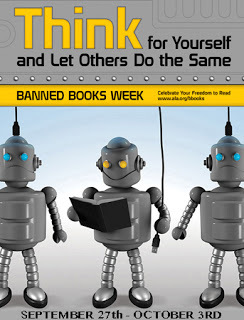 It's that time again, time to celebrate banned books and to defy those elements of our society who always try over and over to censor books in an effort to control what the rest of us can read or think about.
It's that time again, time to celebrate banned books and to defy those elements of our society who always try over and over to censor books in an effort to control what the rest of us can read or think about.I have seen repeated attempts to censor the books of writers I admire, writers who have been role models to me, and in some recent cases, writers who are my friends. I keep hoping that, as I grow older, this week will have shorter and shorter lists of banned books. Unfortunately, the lists still grow longer each year.
Here is a poem I wrote years ago about this whole situation of censorship--and unfortunately it's still as relevant today as it was when I first wrote it for Banned Books Week years ago.
SPELL FOR BANNING A BOOK
First, find a censor. This will be hard— not that censors are rare, but they are adept mimics. Do not be fooled. No matter how benevolent its disguise, a frightened censor is dangerous. Approach with caution. To safely capture it for your spell, you must circle the censor chanting soothing nonsense syllables. It is meaning that terrifies censors.
Surround the stupefied censor with charms made from advertising photographs of a mythical golden age— smiling mothers in high heels and aprons, silent fathers keeping sentinel on horseback, sexless children never asking questions. Sacred to the censor, such charms have power to blind it.
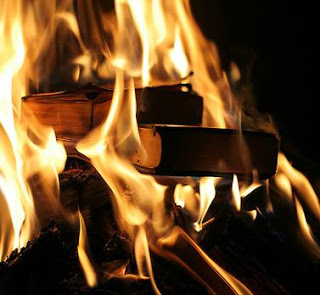
Select the book you want banned. Set it outside the circle of charms, and carefully remove the charm nearest so the censor can detect the presence of an attempt at meaning.
Protect yourself. Enraged censors have been known not only to ban books but to burn them and then press on to people.
Published on September 27, 2015 18:42
September 9, 2015
Why Taking Issue with Racist, Homophobic, Ableist Stereotypes Does Not Equal Being a Member of ISIS and Other Home Truths
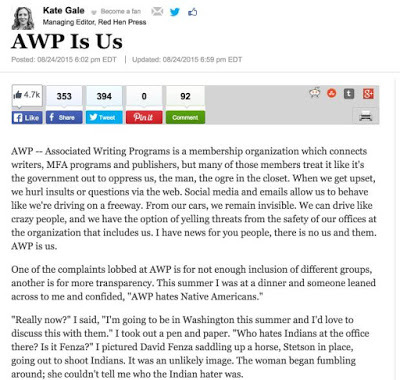
Once again, this will be a long post as I try to unpack the problems with a rambling article in the Huffington Post today that responds to the issues that began on HuffPo in an article by Kate Gale several weeks ago. This current article by Carol Muske-Dukes veers from Kate Gale’s original HuffPo article to terrorism (with accusations comparing those opposed to Gale’s article to ISIS) to an article in The Atlantic to free speech and the First Amendment to standup comedians to AWP to Muske-Dukes’s youthful engagement with teaching in the prison system to Stalin to “triggering” warnings to Dorothy Parker to the University of New Hampshire to “enduring” values and rights to censorship and alleged death threats to Straight Outta Compton to the Kurdish women fighters to Mandelstam and on and on. Oh, and of course, “political correctness,” that tired, old canard from the Newt Gingrich/Jesse Helms-era culture wars against writers and intellectuals that has so steadfastly refused to die.
http://www.huffingtonpost.com/carol-muskedukes/gale-force_b_8101576.html
First, let’s back up and revisit the original article by Kate Gale for those of you who didn’t see it or have blessedly forgotten it. I wrote a blog post about it and included screen shots of her article, which is important because the article has been deleted and replaced with an abortive apology, which was later supplemented with a fuller, still non-apologetic apology. I have given a detailed timeline with links of what led up to this article, “AWP Is Us,” and what led from it (at least up to the time I posted this blog). I’ve also posted the screenshots of “AWP Is Us” on this blog for your convenience.
http://lindarodriguezwrites.blogspot.com/2015/08/a-series-of-unfortunate-eventsawp-david.html
As you may note, in that blog post there is no threat of violence toward Gale. If you go to the link for what was the original article and then became the first “apology,” you can still read the many, many comments. I haven’t read all of them but have read the first hundred or so. There’s no threat of violence toward Gale. Most of the comments are well-reasoned and articulate commentary on a troublesome piece of writing. If you follow the other links to other blog posts and articles about the controversy, you will find no threats of violence. I’ve read many more blogs and essays about this than are linked in my blog, and all of them have been well-reasoned and articulate without any threat of violence. There may well have been some threat of violence somewhere, but although I’ve read a huge number of internet article comments, blog posts, articles, essays, Facebook posts, and tweets concerning the Gale article, I have seen not one threat of physical violence, not even in the heated discussions of it that have taken place in private Facebook groups for writers of color. I urge my readers to google “AWP Is Us” and “Kate Gale AWP” and read all the various commentary for themselves. Violent threats are obviously not the common tenor of the opposition to Gale’s column, although Muske-Dukes would try to make it seem so.
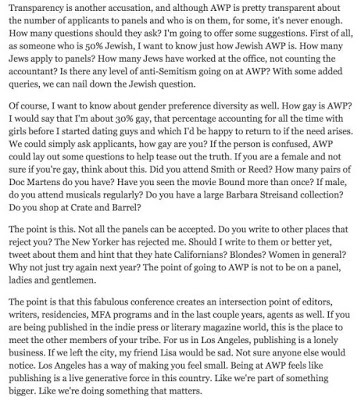
Unfortunately, Muske-Dukes seems to have particularly conflated Gale’s article, stand-up comedians, and the First Amendment in a most bizarre way. First of all, freedom of speech, as guaranteed by the First Amendment, is the constitutional right of a publisher to publish even controversial work without official interference from the government. It does not guarantee that readers will not take issue with the published work. It does not even guarantee the right of an author to be published if a press does not choose to publish her/him. It is narrowly focused around banning official government-supported censorship of publishers and has been expanded to cover the government’s inability to officially stop most kinds of oral speech, even if offensive. No government official made any attempt to prevent the Huffington Post from publishing Gale’s article. Gale is not a stand-up comedian in front of a live audience, so the many odd references to various stand-up comedians and the suggestion that comedy is dead because of the opposition to Gale’s piece make no sense, at all. As a matter of fact, Gale herself, in her later apology, has called her article a failed attempt at humor.
Perhaps one of the most irksome parts of Muske-Dukes’s article is her assumption that Gale’s critics are not activists and are not doing anything for the community.
“But I'm inclined to ask the ‘virtual vigilantes’ if they have ever started a press or a membership organization, if they've gone into the prisons to teach -- or if they've tried to do stand-up? Instead of weeping, why not figure out how to be strong?”
I know many of the people who have articulately opposed Gale’s stereotypes with comments, blog posts, essays, etc. We have started and run presses and membership organizations and reading series. We have gone into prisons and jails and juvenile detention centers to teach—and inner-city schools and domestic-violence shelters and homeless shelters and among migrant workers and on reservations and elsewhere. I have myself done all of those. Most of us still are doing such things. The assumption that only white privileged academics do anything for the community is both false and foolish.
Another assumption she also makes is that no one who opposed Gale’s article opposed the erasing of women and the misogyny of the movie, Outta Compton. Once again, Muske-Dukes is drastically incorrect, apparently not having bothered to research her accusation before making it. The Washington Post had an article by Jamilah Lemieux discussing the fact that all the critical praise for the movie was coming from white male critics. https://www.washingtonpost.com/posteverything/wp/2015/08/21/white-critics-and-rap-fans-love-straight-outta-compton-but-theyre-missing-half-the-story/
Kim Trent wrote about it in the Detroit Free Press. http://www.freep.com/story/opinion/contributors/2015/08/21/nwa-women/32163613/
Alex Abad-Santos wrote about it in Vox: http://www.vox.com/2015/8/25/9205595/compton-movie-misogyny
And there’s much more that can be easily googled.
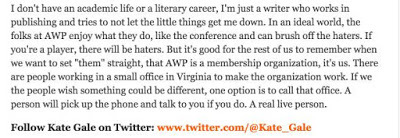
Now, we come to the really foolish hyperbole. Some of it lies in the above quote from the article—“virtual vigilantes.” But it gets much worse.
“What, I asked myself, had Kate Gale done to piss off Isis?
Here's how she pissed off (if not Isis itself) those unwittingly willing to take ideological instruction (in the cause of self-righteousness) from the M.O. of extremism. “
“I'm talking about women who actually fight and kill members of Isis! Though they live in the autonomous region of Iraqi Kurdistan -- an area beset by tragedy and oppression -- these women use Isis' misogyny against them. They are the Kurdish women fighters who fashion a military strategy on the belief of these Muslim extremists that if they are killed by a woman they cannot go to heaven (so forget the 72 virgins!) -- so if they see a female fighter coming at them, they run like hell. This is a desperate situation but it is also funny -- unless perhaps you're too P.C. to laugh. Instead of weeping, why not recruit yourself to go over there and join forces with women who really know the meaning of the comedy term, ‘to kill’?”
So, if we have issues with Gale’s use of racist stereotypes for “humor,” we are terrorists, members of ISIS, “willing to take ideological instruction… from the M.O. of extremism”? I would like to note that, to my knowledge, no one tried to even imply that Kate Gale was a terrorist, a member of ISIS, or taking ideological instruction from terrorists. But that is the accusation Muske-Dukes levies against anyone who has problems with Gale using the genocide of our ancestors as a joke to hold us up for ridicule. As Kimberly Gail Wieser comments on Muske-Dukes’s article, “. . . and there's just a little historical irony in making jokes about the American Holocaust and then calling us terrorists if we defend ourselves when other people were the ones utilizing violent language. Just saying.”
Also, to suggest that we must somehow prove our genuineness, non-terrorist-ness, and non-PC-ness by volunteering to go over to the Middle East and join up with the Kurd women warriors who are fighting against Turkey and ISIS is so bogus that it’s truly laughable. It’s as if Muske-Dukes believes that only those with white privilege are allowed to criticize anything in this society without making some extraordinary effort to “deserve” that right. How dare we people of color, LGBTQ people, people with disabilities even open our mouths, right? Well, we dare. And we shall go right on speaking out when we see people employing racist, homophobic, ableist stereotypes.
The sad thing is that many people within AWP’s diversity communities were so disgusted with the whole situation before that they wanted to withdraw from AWP. There have been calls that we should break away and form our own organization or go to another organization that’s more welcoming of diversity. Along with many others, I’ve been trying to persuade people not to run away but to stay and work with AWP to make things better. We’ve pulled together all the diversity caucuses to try to work things out and keep people from bolting in large numbers. A piece like Muske-Dukes’s undoes a lot of that work and causes us to start all over again.
How often must we go through this? If this keeps up, soon enough, even those of us who keep saying, “Not all of the white lit hierarchy thinks that way—we need to stay and work things out,” will have to agree that “yes, they just want us to shut up and take whatever they dish out.”
Published on September 09, 2015 14:57
August 26, 2015
“A Series of Unfortunate Events”—AWP, David Fenza, and Kate Gale’s “AWP Is Us”
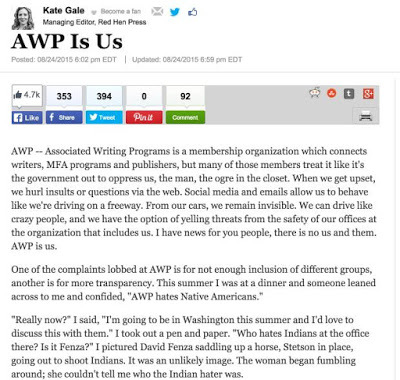 LATEST NEWS: AWP director Fenza defends Kate Gale's piece.
LATEST NEWS: AWP director Fenza defends Kate Gale's piece.http://www.publishersweekly.com/pw/by...
This is a long post because I’m trying to give a timeline of events in a situation that bodes ill for #diverselit writers and some background for my readers who are not familiar with the situation or even with the organization and players. This series of events begins with the announcement of panel acceptances for The Association of Writers and Writing Programs (AWP), the nation’s largest national organization for writers and academic programs that teach writing. There is always fierce competition for representation on such panels—by individuals because travel funding from their institution to even attend AWP (which is an expensive, huge conference) often depends on them being named to a panel and by AWP’s various communities because, as with so many large national organizations, the default tends to white male. This last, I want to point out is something that AWP has been working on in recent years. They still have a long way to go, but they have made real progress from the early days when AWP was primarily white and male. The panel representation has diversified remarkably from those days, although it is still problematic, and the establishment of caucuses for marginalized communities within AWP has been a major step forward.
After a disastrous earlier mix-up which inadvertently made some unofficial decisions public and caused dissatisfied speculation and murmurings even before the official list came out, the list of official panel acceptances was announced on Twitter. An AWP member named Laura Mullen tweeted in reply (from her personal account), asking if they would furnish demographics on the panel selections. AWP director David Fenza then sent her an email chiding her for “casting aspersions” on AWP and copied both her department chair and associate chair. For someone on tenure track or non-tenured or adjunct, as many AWP members in the marginalized communities are, this would have been an effective silencing tactic, threatening their employment. In Mullen’s case, she is an endowed professor and tenured, as well as director of LSU’s writing program, so she was not silenced. She wrote about it on her blog and posted Fenza’s letter, and the whole situation blew up on social media.
http://afteriwasdead.blogspot.com/?view=classic
Soon, a petition was posted at Change.org, focused on the lack of disability panels and asking for increased transparency and for Fenza to apologize to Mullen and for the AWP Board to officially underscore that intimidation tactics by Board or staff of AWP against members would not be tolerated.
https://www.change.org/p/awp-board-of-trustees-david-fenza-awp-executive-director-call-for-increased-diversity-accessibility-and-transparency-from-awp?recruiter=1248188&utm_source=share_petition&utm_medium=facebook&utm_campaign=autopublish&utm_term=des-md-share_petition-no_msg&fb_ref=Default#petition-letter
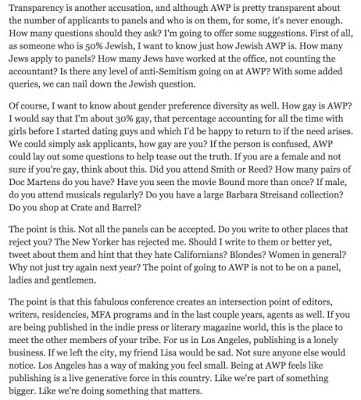
At that time, AWP should have risen to the occasion. Fenza should have publicly apologized. The Board should have issued a statement disavowing such intimidation tactics and stating they would not be tolerated. AWP should have agreed to more transparency and entered discussions as to how this could be accomplished. If this had happened, AWP would have been seen as a responsive and responsible organization. But, of course, it didn’t. The Board members are located all over the U.S., the leader of the staff was the person (Fenza) with the most to lose, and institutions in general move slowly in making decisions and dealing with crises. But finally AWP began to release some stats on panel selection and talk about the possibility of more transparency in the future—without, unfortunately, addressing the issues raised around disability or Fenza’s letter.
Next in this unfortunate sequence of events, we come to founder and CEO of Red Hen Press, member of the AWP 2016 conference committee, juror for panel selection for AWP 2016, Kate Gale, and her Huffington Post piece, “AWP Is Us.” (She has been scrubbing all evidence of this from the internet, even from Google’s cache, so I have included screenshots of her actual original article as graphics on this post.) Also, here’s a link to a PDF of the original article.
https://www.dropbox.com/s/hvrwq6ofzdrgkvx/AWP Is Us | Kate Gale.pdf?dl=0
There is so much wrong with this article that it’s hard to know where to start, the offensive, insulting stereotypes of so many groups—could she have packed more stereotypes into one short piece?—the chiding tone, the “you people” right up front in her first paragraph. I’m going to focus on the second and third paragraphs for purely personal reasons—because she used those paragraphs to insult and offend me and mine and because I believe she used me and mine as a stalking horse since she didn’t have the nerve to write a piece ridiculing and insulting people with disabilities (who were the originators of the petition). A lot of folks are fine with ignoring people with disabilities and treating them as invisible, but then worry about being seen as cruel if they publicly make fun of people with wheelchairs, canes, braces, and walkers. (I say this with more than a hint of personal bitterness, since I’m one of those people on canes.)
But Indians, hey, everyone makes fun of Indians. It’s a national pastime. In Washington, D.C., people make themselves up as caricatures of Indians to go to ballgames in big groups and ridicule us. At music festivals, hip young things don our sacred regalia or perversions of it to dance around half-naked. America’s been insulting us and underestimating us for centuries.
“One of the complaints lobbed at AWP is for not enough inclusion of different groups, another is for more transparency. This summer I was at a dinner and someone leaned across to me and confided, ‘AWP hates Native Americans.’
‘Really now?’ I said, ‘I'm going to be in Washington this summer and I'd love to discuss this with them.’ I took out a pen and paper. ‘Who hates Indians at the office there? Is it Fenza?’ I pictured David Fenza saddling up a horse, Stetson in place, going out to shoot Indians. It was an unlikely image. The woman began fumbling around; she couldn't tell me who the Indian hater was.”
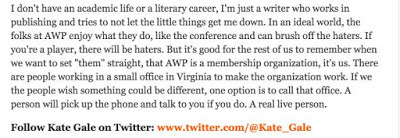
Yes, let’s look at that image of David Fenza shooting Indians. How nineteenth century for such a twenty-first century woman? Perhaps she doesn’t know any of us survived the Removals and Indian Wars? No, that can’t be. She has prominent Native writers on her board and has published Native writers (none of whom I will name here because I know they must be cringing over this debacle already). So, it’s not ignorance. It must be a deliberate attempt to bring in a reminder of the genocidal Indian Wars, a reminder to us that we should be careful and not challenge powerful white people. I don’t think David Fenza hates Indians, but her own words make me think Kate Gale does.
I don’t believe for a second that this conversation took place, or if it did, it was not in those words. I know a large number of the Native writers who attend AWP, and I know of not one who would say, “AWP hates Native Americans.” Frankly, I know a hell of a lot of writers from many marginalized communities at AWP, some of whom have been quite angry with AWP for a while, but no one I know would say the organization hates Latinos/African Americans/LGTBQ people/whatever. I suspect this is more what a privileged white person thinks a person from a marginalized community would say. It’s basically Tea Party rhetoric in an environment where that kind of discourse is the last thing I would expect.
Indigenous writers at AWP have been working with the Board and the staff to increase Indigenous representation and participation, and while AWP is slow in implementing desired changes (as one learns to expect from big organizations), the staff and Board have been basically supportive. We keep pushing, and they slowly respond with greater representation and participation. We wish they were faster to change, and they wish we would stop asking for more, but our conversations and relationship have never been marked with hostility on either side. As I said earlier, I suspect Gale didn’t want to say something as openly and pointedly ridiculing and offensive about people with disabilities, so she chose our community as a safe and acceptable stalking horse. This was a mistake, of course, but then the whole piece was a massive mistake, insulting people of color, LGBTQ folks, even Jewish people—and people with disabilities were not fooled, anyway.
Immediately, the comments section at Huffington Post began accreting negative comments, some of it quite thoughtful and excellent feedback for Gale if she bothered to read it. (NOTE: Those comments have also been scrubbed from the site.) A stream of even more hostile comments began on Twitter. Facebook, especially in groups dedicated to traditionally marginalized writers, developed long, multi-faceted conversations around “AWP Is Us.” Thoughtful blog posts sprang up, and Higher Education Inside and Publishers Weeklypublished articles about it.
https://www.insidehighered.com/news/2015/08/26/article-defending-writing-program-association-infuriates-many-its-members#.Vd33OWvpsPg.twitter
http://www.publishersweekly.com/pw/by-topic/industry-news/trade-shows-events/article/67901-charges-of-discrimination-lack-of-diversity-leveled-against-awp.html
With all the negative feedback swarming around, AWP finally made a limited comment. In a tweet from the official AWP Twitter feed, they said: “AWP board and staff were unaware of Kate Gale’s Huffington Post article until it was posted. AWP did not and does not endorse the article.” Many people felt this was too little, too late, especially as the chair of the AWP 2016 conference committee, a Board member, initially “LIKED” this article when first posted, only to remove that later when all the negative publicity arose.
Then Gale took down her article on Huffington Post and posted the following non-apology.
http://www.huffingtonpost.com/kate-gale/awp-is-us_b_8029224.html
Other than the first sentence—“I apologize for this post and the hurt it caused.”—the rest of the post is basically the Red Hen Press mission statement and an ad for the press. Apparently, she had become aware of the way her article was adversely affecting Red Hen Press. There had been suggestions that it be boycotted. Along with others, I cautioned that such a boycott would harm the writers of RHP, who were probably in pain already from the piece their publisher had posted in such a huge public forum. I do have great sympathy for RHP’s authors and its board members, who were almost certainly not consulted before this blog was posted and who must have felt it as a great betrayal from someone whom they trusted.
As this post is going up, the most recent media coverage is an article in the Los Angeles Times, which also criticizes her portrayal of Los Angeles as not welcoming to literary culture.
http://www.latimes.com/books/jacketcopy/la-et-jc-diversity-at-awp-20150826-htmlstory.html
Gale is reaping the whirlwind that she sowed, and my final word on her aspect of this huge fiasco is a suggestion that people look up her resume. She is woven through the warp and weft of national literary culture, sitting on the boards or in leadership positions of many of our largest and most influential organizations that give awards and grants and publication. Ask yourself how little confidence writers of color, writers with disabilities, LGBTQ writers, and other marginalized communities can have that their work or the work of the best people in their communities will have a real chance at any of these awards, grants, panels, or other opportunities when someone who thinks this way is in power. Ask yourself how this is fair or just.
To me, however, the most important part of this disaster is the organization, AWP. This organization is a vital one for writers, academic programs, and literary culture in this country. It has made some real progress, after initially being dragged with a little screaming into the diversity of the twenty-first century. I hate to see its forward momentum blocked. I think establishment folks don’t actually realize that many writers in marginalized communities, who are fighting for every tiny scrap of representation in the larger community they can get, fear that those people in charge of all these large organizations feel the way Gale writes about their communities. I think it’s a subtler thing than that, a more institutional and unconscious bias in favor of the familiar, but those in leadership positions at AWP need to understand that many will read Gale’s piece and say, “Wow! What I was always afraid of is true!” It is imperative that AWP make absolutely clear, not just that they disavow any hint of approval for this piece, but that they will take concrete steps immediately to move toward greater transparency and make a strong formal statement that tactics of intimidation by AWP Board or staff toward members are unacceptable and will face serious consequences. And I think AWP must ask itself honestly whether it can continue to enjoy any confidence from its membership if David Fenza remains as its leader without formal reprimand to Fenza or apology to Mullen.
I have been so pleased to see the transformation over the years of AWP into a much more diverse organization and conference. I have so enjoyed seeing my fellow writers from marginalized communities begin to show up in greater and greater numbers every year. I would hate to see a reversal of all the very real good work that hard-working people on that board and on that staff have put in through the years to make this happen. I hope AWP will meet the challenge it is currently facing and, for once, do the right thing fully when it needs to be done and not much, much too little too late.
Published on August 26, 2015 20:13
June 23, 2015
How Did Writers, Directors, and the Media Help Create the Charleston Massacre at Mother Emanuel?
I've been trying to move past anger, thinking and thinking and trying to come at this whole situation of the massacre at Mother Emanuel AME Church in Charleston from a place of love and understanding and a sense of optimism I've had to struggle mightily to maintain. This what I've come up with.
I’d like to focus on the nine people whose lives were cut short in Mother Emanuel AME Church on June 17th. I’ve linked to an article about them here.
http://mashable.com/2015/06/18/charleston-shooting-victims/
I didn’t know any of these people personally. I live half a continent away from them. But I feel as if I do know them when I read about them—their hard work, their devotion to family, their community leadership, and especially their devout Christianity—because they sound just like my neighbors and friends. I’ve owned a a home and lived in a predominantly African American neighborhood in one of America’s most racially segregated cities for over 40 years (and yes, it was already almost entirely black when I moved in). These are the African American people I know, the ones I never see in books or on television or in the movies, the ones who sometimes work several jobs so they can send their kids to a good private school since our urban public schools have become a disaster, the ones who are teachers and librarians and nurses and bankers and managers and supervisors, the ones who go to work during the week and to church on Sunday (and often Wednesday night prayer group or university night classes) without fail, day after day, week after week.
I have seen the long double rows of black men standing up before a packed congregation to pledge themselves to mentor and help all the young boys of the area, not just their own. These are the men who coached my kids’ Little League teams and helped dig out our car when it slid into a snow-filled ditch. These are the men I pass mowing their lawns and trimming their bushes and, sometimes, playing their musical instruments on their lawns, always giving me a polite, friendly greeting and wave. These are the men I never see on the media with its focus on the idea of the African American man as scary, violent criminal.
These are the women I’ve had coffee with and traded recipes with and joked with about our men and worried with about our kids. These are the women who bring casseroles and pies when someone’s sick or someone’s died. These are the women who work in the church food pantry, serving white and black families alike. These are the women who are professionals out in a world that constantly disrespects them as African Americans and disrespects them as women, and these women still carry themselves with dignity and pride through all of it.
I’ve been to AME churches and other black churches quite a bit in my life, and I’ve always been made welcome in the warmest, most loving, and truly Christian way. My heart breaks every time I read that the murderer said he almost couldn’t go through with it because the people he killed were so nice to him. I know those people. I’ve lived with those people for over 40 years.
And what I want to say is not to the white supremacists and vicious racists out there—because they’re mostly not going to change—but to the news media and the writers and filmmakers and television show producers and directors. Why aren’t you showing us these people? Why can’t I ever see wonderful people like these nine beautiful human beings and my neighbors in any of your productions? Why do you persist in showing only a negative minority of the African American population over and over, so that all the white people who live in all-white suburbs and work in all-white workplaces think your stereotypes are what African American people are and all they are?
And to my white friends I say, don’t let them do this any longer. Demand to see the reality of African American life, which is full of humor and music and parties and laughter and love, as well as all the other stuff of all lives. They do this to Natives. They do this to Latinos. They do this to everyone “different.” So that those white people (an unfortunately ever-larger number) who live carefully segregated, all-white lives only know these negative stereotypes about people from other cultures than their own. Don’t let them do this any longer. More than anything else, more even than the disgusting hate speech, this eternal lopsided presentation is what feeds the ugly racism that underlies America. Demand that it stop.
REPLIES TO COMMENTS (because Blogger won't let me comment on my own blog):
Reine, I am not surprised--that a black church accepted you or that you did so well for them. I've complained for a long time to family and friends about the representation of African American people, Native people, Latino people, etc., in books and movies and on television. So many white people now live such racially isolated lives that all they ever know about any other culture is what they read or see in the media. And they are fed a non-stop stream of racist, threatening bugaboos. They never see real people like the ones in your church or my neighborhood.
Published on June 23, 2015 11:03
January 21, 2015
Marjorie Agosín—Books of Interest by Writers of Color
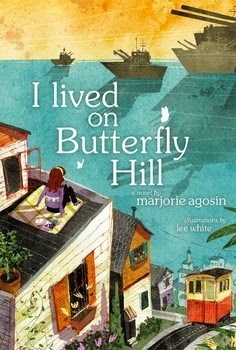
This is part of a special #diverselit, #WeNeedDiverseBooks intensive for my regular series of posts, Books of Interest by Writers of Color.
I’ve written before about Marjorie Agosín, her brilliant books of poetry, memoir, essays, and scholarship and her amazing career as a human-rights activist. Her 2014 book, I Lived on Butterfly Hill (Simon & Schuster, 978-1416953449), is her first novel. Semi-autobiographical, it tells the story of a young girl in Chile with parents allied with the democratic government, who is forced into exile in the United States because of a dictator’s coup and its vicious aftermath. Agosín herself fled to the U.S. with her parents at the same age from Pinochet. Agosín has compressed the length of the dictatorship in her already expansive book, as well as other details—for story purposes and because, as she said in an interview, “I could not bear to make Celeste Marconi endure 17 years of a fierce dictatorship. Three was enough.”
Probably because of the age of the protagonist, the novel is marketed as a book for older children/young adults, but this luminous, poignant novel actually makes compelling reading for anyone of any age. The charming illustrations by Lee White are paired perfectly with the lyrical prose of Agosín, an award-winning poet, the enchanted life the protagonist lives in Chile before the Pinochet-like dictator, and the mysterious and mystical events of her life on the coast of Maine and back in Valparaiso after the dictator’s death. I Lived on Butterfly Hill was published to universal praise, including a starred review from Booklist and a nomination for the Cybil Awards in children’s and young adult literature. It has recently gone into a second printing.
Grandchild of Holocaust refugees, Celeste Marconi is a happy dreamer, who loves her room at the top of her house high on a hill overlooking the harbor where she can make friends with pelicans while her grandmother and her Indigenous nanny take care of all the daily household work. She lives cocooned in the love and protection of friends, neighbors, and family in Valparaiso, Chile—until the time comes when even dreamy Celeste can’t deny the political unrest that is sweeping through the country. Warships fill the harbor. Classmates disappear from school. No one talks about any of the terrible things that are happening. There are just holes in the world as there always were when her grandmother talked about her life in Nazi Germany before she had to flee to Chile. Celeste doesn’t quite know what is happening, but one thing is clear: no one is safe, not anymore.
The country has been taken over by a government that declares artists, protestors, and anyone who helps the needy “subversive” and dangerous. So Celeste’s parents, doctors who help poor people, must go into hiding before they, too, “disappear.” To protect their daughter, they send her to her eccentric aunt on the coast of Maine in the United States. Plunged abruptly into the very different seaside world of Juliette Cove, Celeste has no knowledge of English, of American society and popular culture, of winter or snow, of housework, and has never been lonely in her life—before this. She goes to school, tries to help her aunt around the house, and learns to adjust to life in Maine, even as her heart stays wrapped up in Valparaiso and her family there. This section of the book is one of the most evocative and tender expressions of the experience of the immigrant, especially the child immigrant, who lives in and between two worlds each day and the emotional roller coaster that entails.
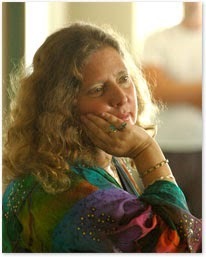
Eventually, just as Celeste begins to feel at home in Juliette Cove, the dictator dies of a nasty cold (Agosín’s little joke to get back at the long-lived Pinochet), and Celeste is called back home to a Valparaiso and Chile that she hardly recognizes. Her parents are still gone, perhaps dead, and she wonders if anything can ever be the way it used to be. The magic and mysticism that permeate all levels of Chilean society are important elements of the book, part of the powerful threads of imagery and metaphor that weave throughout, but here they play a major role in the denouement of the book’s bittersweet ending.
Beautiful language, captivating characters, and a gripping story make this rich, ambitious novel a winner for anyone who wants to know what it was like living through the horrors of the Pinochet regime or wants to understand the experience of the exile or immigrant or simply wants to fall into a lush world of fear, loss, hope, and courage and live in that fascinating environment for the duration of a book by a spellbinding storyteller.
To read more about this inspiring author, visit this past post:
http://lindarodriguezwrites.blogspot.com/2011/12/books-of-interest-from-writers-of-color.html
And this one:
http://lindarodriguezwrites.blogspot.com/2010/09/honored-by-un-and-winner-of-numerous.html
Usually, I send readers to the small or university presses who have published the writers I discuss in order to support those midwives to #diverselit, but this book of Agosín’s is published by one of the big titans in New York City, so I’ll just give the Amazon link. I’ve also given the ISBN number with the first mention of the title, so you can also order it from your local independent bookstore, which would be even greater. Any way you go about it, get this book. You will thank me after reading it.
http://www.amazon.com/Lived-Butterfly-Hill-Marjorie-Agosin/dp/1416953442
Next time, I’ll look at Frances Washburn and her new novel, The Red Bird All-Indian Traveling Band. Until then, branch out in your reading. Step outside your comfort zone and broaden your capacity for empathy. Read #diverselit.
Published on January 21, 2015 16:07



